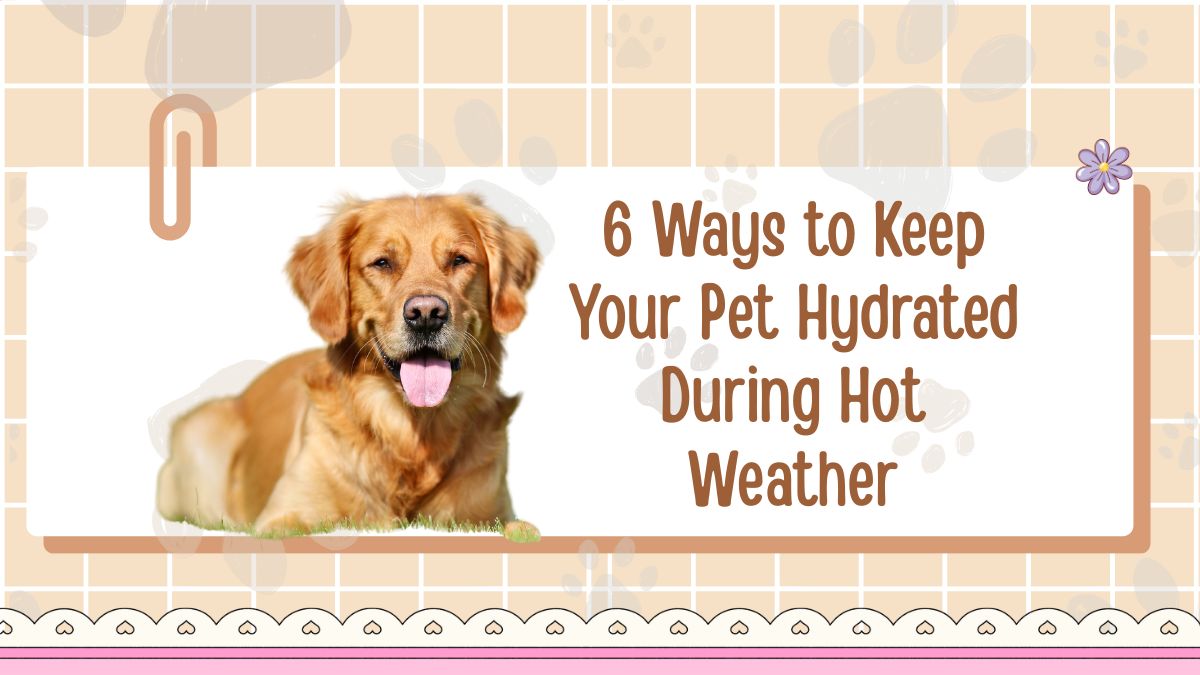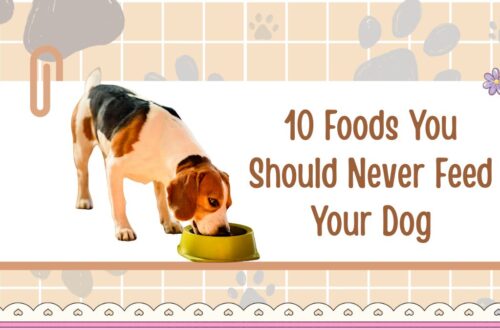As the mercury rises and outdoor temperatures soar, ensuring your beloved pet stays properly hydrated becomes more than just a comfort measure—it’s a health imperative.
For dogs, cats, and other pets, the demands of heat, increased panting, outdoor activity, and even diet changes mean that standard water intake may no longer be sufficient.
In 2025, with global warming, more intense heat spells, and emerging veterinary guidance, pet owners must be vigilant and proactive about keeping their companions hydrated. This article explores six key ways you can help your pet maintain hydration during hot weather, complete with current figures, detailed explanations, a facts table, and full guidance.
Why Hydration is Critical During Hot Weather
When pets are exposed to high temperatures, their bodies must work harder to regulate internal heat. For example, dogs cannot sweat like humans—they rely primarily on panting and evaporative cooling via their paw pads.
As a result, heat stress and dehydration become key risks. Veterinarians in Bengaluru reported a roughly 50 % seasonal increase in dehydration cases among pets during hot weather.
Dehydration affects organ function, digestion, skin health, urinary system, and can even lead to heatstroke or kidney stress. Therefore, hydration isn’t optional—it’s essential.
Six Ways to Keep Your Pet Hydrated During Hot Weather
1. Provide Constant Access to Fresh, Cool Water
One of the simplest yet most effective measures is offering fresh water throughout the day. Water bowls should be cleaned and refilled at least once or twice daily; one leading veterinarian emphasises refreshing bowls frequently.
For example:
- Use several bowls in different spots in your home or yard so your pet can access them easily.
- Place bowls away from direct sunlight so the water stays cooler longer.
- Consider adding an ice cube or two, which helps lower the water temperature and adds novelty.
2. Incorporate Moisture-Rich Foods & Add Water to Meals
Food is a source of hydration too. Many wet pet foods contain 75 % to 78 % moisture, which helps contribute meaningfully to fluid intake.
Practical ways:
- Feed wet food instead of, or in addition to, dry kibble during hot weather.
- For dry kibble, add a small amount of warm water or low-sodium broth to increase fluid.
- Offer small frozen treats made from pet-safe broth or watermelon (seedless) — these act as hydration and cooling.
3. Use Running Water or Multiple Drink Stations to Encourage Intake
Some pets, especially cats, are more likely to drink if the water is moving, clean, and appealing. A pet fountain or drip feature can make a big difference.
Tips:
- Invest in a pet water fountain with a flow to stimulate interest.
- Place water bowls in quiet, low-traffic areas (especially for cats) away from the litter box or food dish.
- Experiment with bowl materials: ceramic or stainless steel may be more attractive than plastic for some pets.
4. Carry Water On The Go & Monitor Outdoor Activity
When you take your pet outside during hot weather—especially for walks, hikes or travel—portable hydration is essential.
- Use a collapsible water bowl or pet-specific water bottle when out of the home.
- Offer water breaks frequently—if you feel thirsty, your pet likely does too.
- Avoid exercising your pet during peak heat (e.g., midday); the external temperature may reach levels at which panting alone isn’t enough to cool them.
- The “five-second pavement test” (placing your hand on the ground for 5 seconds—if too hot, the pet’s paws are at risk) is an additional safeguard.
5. Monitor For Signs of Dehydration and Know When to Seek Help
Even with precautions, pets can still become dehydrated—so being alert to signs is critical. Key symptoms include:
- Dry or tacky gums, sunken eyes.
- Skin that doesn’t “snap back” quickly when gently pinched (“tenting” test) – a sign of fluid loss.
- Excessive panting, lethargy, reduced appetite, dark urine.
If you observe any of these, move your pet to a cooler location, offer fresh water, and contact a veterinarian if symptoms persist.
6. Adjust Environment, Provide Shade & Reduce Heat Load
Hydration works hand-in-hand with keeping your pet’s environment cool and comfortable. Lowering their heat load reduces fluid loss. Measures include:
- Ensuring shaded resting areas, ventilated rooms or indoor cool spaces.
- Reducing activity during hottest parts of the day; shift walks to early morning or evening.
- Consider cooling mats, damp towels, shallow water areas for wading, or simply leaving water accessible outdoors in shaded spots.
- Grooming: removing mattes and heavy undercoat helps pets cool more efficiently, reducing dehydration risk.
Hydration Facts & Guidelines for Hot Weather
| Metric / Guideline | Typical Value / Best Practice | Notes & Implication |
|---|---|---|
| Wet food moisture content | 75-78 % moisture content in wet food | Helps raise hydration via diet. |
| Frequency of cleaning/refilling water bowls | At least 1-2 times daily | Maintains freshness and encourages drinking. |
| Skin “tenting” test for dehydration | Pinch skin; if slow to return, indicates dehydration | Simple home check. |
| Outdoor ground temperature risk threshold | Pavement at ~40-50 °C (on 30 °C ambient day) can burn paws | Use five-second rule. |
| Increase in pet dehydration cases documented | ~50 % seasonal rise in Bengaluru clinics during heat | Heat drives increased risk. |
| Preferred frequency of hydration check for senior pets | Monitor daily water intake trends | Seniors are more vulnerable. |
Putting It Together: A Daily Hydration Routine
Here’s a sample daily routine to implement all six strategies:
- Morning check: Refill water bowls, clean them, place in shaded, accessible spots.
- Meal time: Serve wet food or mix water/broth with kibble; offer hydration‐rich treats.
- Midday outdoor caution: If taking pet outside, bring water, use collapsible bowl, keep exposure brief and in shade.
- Encourage drinking: Use fountain or flowing water device to interest cats or picky drinkers.
- Evening cool down: Provide shade and indoor quiet space, monitor panting, offer fresh water.
- Monitor signs: Check gums, skin elasticity, energy levels, urine color, and note any change in drinking behaviour.
- If concern arises: Move pet to cool zone, offer water, and call vet if dehydration indicators persist.
Hot weather poses a real and significant risk to our pets—not only through overheating but through dehydration, which can rapidly escalate into danger.
By applying the six strategies outlined above—providing constant fresh water, feeding moisture-rich foods, using flowing water stations, carrying water on the go, monitoring for dehydration signs, and managing your pet’s heat load—you can dramatically improve your pet’s wellbeing through the summer months and beyond.
Remember, hydration is not just about quantity—it’s about accessibility, appeal, diet, environment and vigilance. In 2025, as we face hotter climates and more extreme weather, staying ahead of your pet’s hydration needs is one of the smartest, kindest and most responsible things you can do.
Keep those bowls topped up, treats frozen, and their coats cool—and help your furry friend thrive rather than just survive.
FAQs
While individual needs vary by species, size, diet, activity and weather, a rough guideline: Dogs may drink about 1 ounce (≈30 ml) per pound of bodyweight per day, and cats approximately 3.5-4.5 ounces (≈100-135 ml) per 5 pounds of bodyweight in moderate conditions. However, in hot weather or with increased exercise, these requirements rise significantly.
Yes — many pets respond well to ice cubes, frozen broth cubes or fruit (pet-safe) chunks, especially in hot weather. These not only cool your pet but make drinking more appealing. Flavoured water (e.g., very low-sodium broth) can help stimulate intake, though plain fresh water should always be the main supply.
If your pet has a health condition, hydration becomes even more critical. You should:
Consult your veterinarian for specific water intake targets and monitoring.
Offer multiple water sources and monitor intake hourly during hot spells.
Use wet food to augment hydration if recommended by vet.
Avoid high-sodium additives or liquids not approved by your vet.
Move outside time to cooler hours, shade, and monitor for dehydration signs closely.




